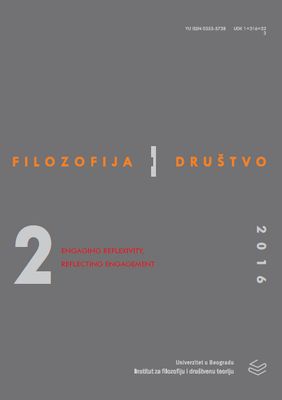Between the Critical and the Engaged
Between the Critical and the Engaged
On the Importance of Studying Symbolic Aspects of the Reproduction of Social Order
Author(s): Tamara Petrović-TrifunovićSubject(s): Social Philosophy
Published by: Institut za filozofiju i društvenu teoriju
Keywords: discourse; culture; symbolic order; interpretive turn; critical sociology; public sociology
Summary/Abstract: Late 20th century developments in social sciences and humanities have placed particular focus on the symbolic aspects of reproduction of social order, stressing the importance of discursive work in the process. It has become widely accepted that discourse is profoundly embedded in society and culture, and hence, closely related also to all forms of power and social inequality. Therefore, it rightfully assumes a central position among the research objects of contemporary social sciences. The aim of this article is to critically examine the impact of the interpretive turn on the study of culture and symbolic registers of society. The analysis focuses on three approaches to the study of discourse, culture and society: critical discourse analysis, Pierre Bourdieu’s sociology of culture and Jeffrey Alexander’s strong program in cultural sociology. These approaches are further analyzed according to their position within Burawoy’s division of sociological labor, particularly between critical and public (engaged) sociology. Finally, the author suggests that engagement in detailed reconstructions of discursive manifestations of power, symbolic struggles and/or discursive codes in a society can provide valuable insight that could open up space for social engagement. However, in order to fully grasp the importance of symbolic aspects for the everyday reproduction of social order, the focus of analysis must also be placed on the role cultural traits and practices (understood as a discursive resources like any other) play in constructing stratificational categories, identities and distinctions, masking the very roots of inequalities that created the perceived cultural differences in the first place.
Journal: Filozofija i društvo
- Issue Year: 27/2016
- Issue No: 2
- Page Range: 407-418
- Page Count: 12
- Language: English

